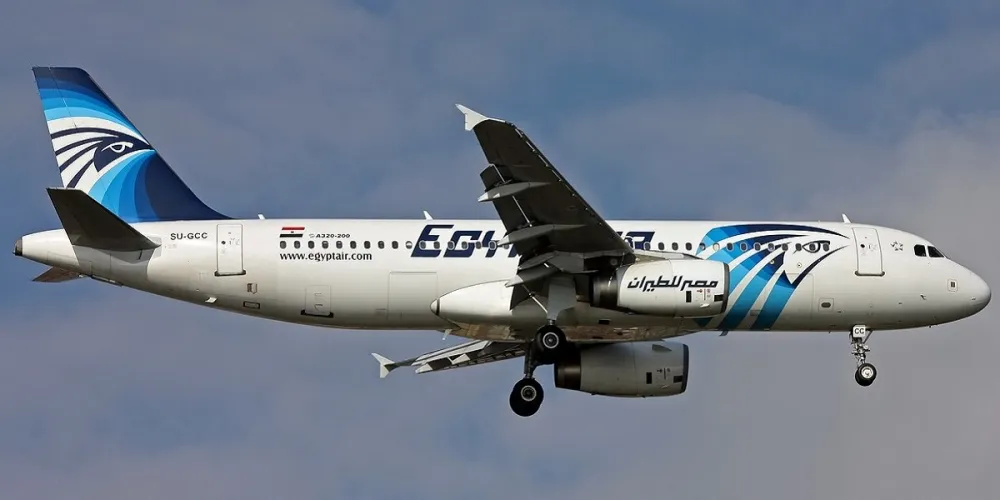
Explosive traces reported in Egyptair crash
Dec 15, 2016

In the investigation of the EgyptAir crash that occurred in May 2016, authorities reported findings of explosive traces in the wreckage. This discovery raised concerns about the potential for a deliberate act rather than an accident. The traces were identified through forensic analysis, leading to speculation regarding the circumstances surrounding the plane's descent into the Mediterranean Sea. The findings prompted increased scrutiny of security measures at airports and on flights, particularly in regions experiencing heightened geopolitical tensions. As investigators continued to piece together the events leading to the tragedy, the implications of the explosive traces remained a focal point of discussion and inquiry.
The tragic crash of EgyptAir Flight MS804 in May 2016 raised numerous questions and concerns regarding aviation safety and security. Investigations into the crash revealed "explosive traces" that sparked intense scrutiny and speculation about the causes of the disaster. This article delves into the findings related to explosive traces and discusses their implications for airline security and passenger safety.
Background of the EgyptAir Crash
On May 19, 2016, EgyptAir Flight MS804, en route from Paris to Cairo, disappeared from radar over the Mediterranean Sea. The aircraft, an Airbus A320, had 66 people on board, including passengers and crew members. The subsequent search and recovery operations led to the discovery of debris and the black box recordings, which provided critical insights into the final moments of the flight.
Investigation Findings
The investigation, led by the Egyptian authorities with assistance from international agencies, focused on various potential causes for the crash. Among the most significant findings was the detection of "explosive traces" on personal belongings of some passengers. This revelation raised alarming questions about the safety protocols in place and the possibility of a terrorist act.
Understanding Explosive Traces
Explosive traces refer to residues left behind by explosive materials. These traces can be detected through various means, including chemical analysis and forensic investigation. The presence of such traces is often indicative of a bomb or explosive device that may have been used to compromise the aircraft's safety.
Implications for Airline Security
The discovery of "explosive traces" in the EgyptAir crash highlights the importance of enhancing airline security measures. Following the incident, airlines and security agencies around the world reevaluated their protocols to better detect and prevent potential threats. Key measures implemented include:
| Security Measure | Description |
|---|---|
| Enhanced Screening | Increased scrutiny of passenger luggage and personal items using advanced technology to identify potential threats. |
| Behavioral Analysis | Training security personnel to recognize suspicious behavior among passengers that may indicate a security risk. |
| Collaboration with Intelligence Agencies | Enhanced information sharing and cooperation between airlines and intelligence agencies to identify and mitigate potential threats. |
Passenger Safety Measures
In response to the findings from the EgyptAir crash, airlines have also focused on improving passenger safety measures. These measures aim to ensure that passengers feel secure while traveling. Some of the initiatives include:
- Implementing stricter check-in procedures to verify the identity of passengers.
- Utilizing advanced technologies for baggage screening, including 3D imaging and explosive detection systems.
- Increasing the presence of security personnel at airports to provide reassurance to travelers.
Global Response and Regulatory Changes
The international aviation community responded to the findings from the EgyptAir crash by convening discussions and conferences to address the security challenges posed by the incident. Regulatory bodies, such as the International Civil Aviation Organization (ICAO), emphasized the need for cohesive global standards in aviation security. Key initiatives included:
| Regulatory Initiative | Description |
|---|---|
| ICAO Security Audits | Regular audits of member states' aviation security measures to ensure compliance with international standards. |
| Training Programs | Development of comprehensive training programs for airport security personnel to enhance their capabilities in threat detection. |
| Information Sharing Framework | Creating platforms for airlines and governments to share intelligence regarding potential security threats. |
Conclusion
The tragic crash of EgyptAir Flight MS804 serves as a somber reminder of the ongoing challenges faced by the aviation industry in ensuring passenger safety. The discovery of "explosive traces" not only raised questions about this specific incident but also prompted a broader reassessment of security protocols worldwide. As the aviation industry continues to adapt and evolve in response to emerging threats, the lessons learned from this tragedy remain crucial in striving for a safer travel experience for all.
Related Articles

Explore Thailand: The Best Islands to Visit for Paradise, Adventure, and Relaxation

The Ultimate Guide to the Best Islands in Thailand for Your Next Getaway

Do babies need passports? How to get a passport for a newborn

How to get a U.S. passport fast: here’s how to expedite the process

What is Mobile Passport Control: 5 reasons why you should use it

SENTRI vs. Global Entry: A detailed guide

Do you need a passport to go to the Bahamas? Let’s find out

Do you need a passport to go to Mexico? A detailed guide

Do you need a passport to go to Canada? We got the answer

Do You Need a Passport for a Cruise: An Essential Travel Guide

Booster Seat Requirements: All the Rules to Follow in Your Rental Car

What Are the World’s Most Powerful Passports, and How Does Yours Rank?

How to Take a Passport Photo at Home: A Helpful Guide

You've got to have heart! Southwest's new livery

Your opinion: Should water be free on low cost carriers?

Young women bolder than guys as solo travellers
